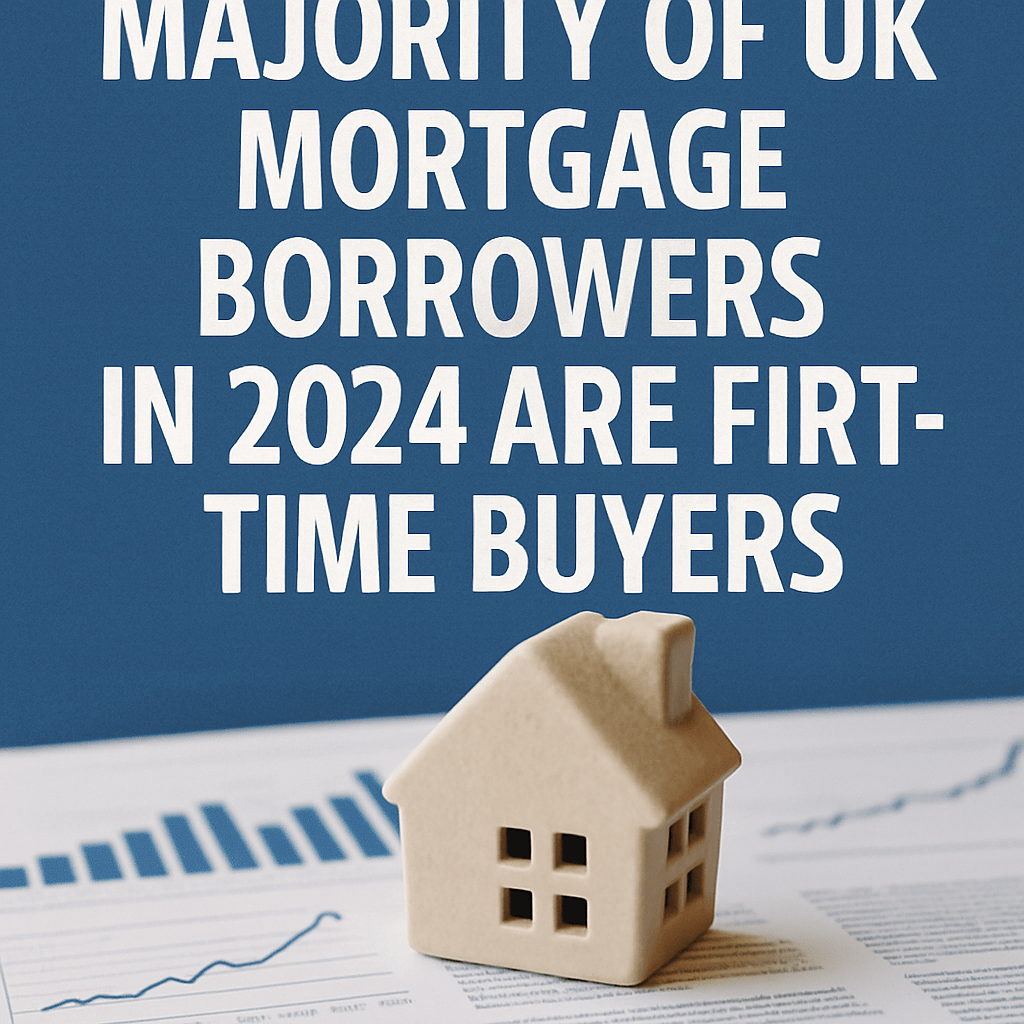Majority of UK Mortgage Borrowers in 2024 Are First-Time Buyers

New data from Mortgage Advice Bureau (MAB), the UK’s leading mortgage intermediary, reveals that first-time buyers accounted for 67% of all mortgage applications processed via the MyMAB and Homebuying apps between January and December 2024. With a sharply rising average deposit requirement and ongoing regional disparities, this segment remains critical to the health of the UK housing market.
Key National Trends in First-Time Buyer Demographics
- Average age: 34 years.
- Median deposit: £24,500, representing an average loan-to-value (LTV) of ~89% on a typical purchase price of £226,900.
- Monthly saving rate: £585, reflecting a loan-to-income (LTI) ratio guideline near 4.5x for many lenders.
- Average annual income: £35,900, with 97% in full-time employment and 43% supplementing salaries via second jobs or shared equity arrangements.
- Solo purchasers: 47% opted to apply alone, a trend driven by improved digital origination platforms and simplified affordability checks.
- Dependents: 31% have at least one child or other dependent, adding complexity to affordability assessments under the FCA’s responsible lending regime.
Regional Breakdown
London
- Comprises 7% of the national sample (81% are first-time buyers).
- Average age: 36; income: £51,000; deposit: £37,000; target property value: £340,600.
- Extended purchase horizon of 18 months, driven by competitive bidding and multiple-offer scenarios.
- 65% apply solo, and only 16% have dependents, reflecting urban living patterns and higher rents delaying family formation.
Rest of England
- Average income: £34,400; deposit: £23,800; purchase price: £220,300; 74% are first-time buyers.
Scotland
- Average age: 35; income: £37,200; purchase price: £196,500; 66% are first-time buyers.
- Higher proportion buying solo (58%) and fewer dependents (23%), supported by lower average property prices and more generous stamp duty relief for first-time buyers.
Wales
- Youngest cohort at 33 years; income: £35,300; savings rate: £740/month; 70% are first-time buyers.
- Highest share with dependents (37%) and greatest reliance on additional income (54%).
Northern Ireland
- 80% are first-time buyers; lowest average income (£29,900) but purchase prices also lowest at £177,500.
- Despite lower salaries, borrowers built deposits averaging £28,000, aided by gifted deposits and shared equity schemes.
Deep Dive 1: Impact of Monetary Policy on Affordability
The Bank of England’s base rate adjustments in 2024 directly influenced mortgage pricing. Average two-year fixed rates at origination hovered around 5.3%, with five-year fixes near 4.8%. Stress tests applied by lenders under the Prudential Regulation Authority (PRA) require borrowers to demonstrate affordability at rates 3% above the product’s initial rate. This stressed interest rate buffer has slowed purchase volumes but ensures resilience against rate volatility.
Deep Dive 2: Technological Innovation in Mortgage Origination
Digitisation has accelerated end-to-end mortgage processing. MAB’s MyMAB and Homebuying apps integrate open banking APIs to verify income and outgoings in real time, reducing manual documentation by up to 60%. Artificial intelligence–driven credit scoring models analyze spending patterns, utilities payments, and rental history to refine risk assessments, allowing some lenders to extend LTVs up to 95% under strict affordability criteria.
Expert Perspectives and Policy Implications
“There’s no one-size-fits-all solution. Affordability pressures, regional price disparities, and cost-of-living factors demand tailored mortgage products,” Rachel Geddes, Strategic Lender Relationship Director at Mortgage Advice Bureau, commented. “Policymakers and lenders must innovate—through schemes like First Homes and regulatory tweaks—to bring the average first-time buyer age below 30.”
Recent proposals from the UK government include expanded Help to Buy equity loans and stamp duty relief extensions, aiming to reduce deposit hurdles. However, critics argue that supply-side constraints—stemming from planning delays and rising construction costs—must be addressed to improve long-term affordability.
Outlook for 2025
- Potential easing of interest rates if inflation falls below 3%, supporting a modest comeback in volumes.
- Further adoption of fintech platforms and AI analytics to streamline credit decisions and customise mortgage terms.
- Increased collaboration between lenders and housing associations to pilot low-deposit shared ownership and rent-to-buy models.
With nearly seven in ten borrowers now first-time buyers, maintaining a balanced mortgage market will require continued innovation, targeted policy support, and close monitoring of macroeconomic indicators.